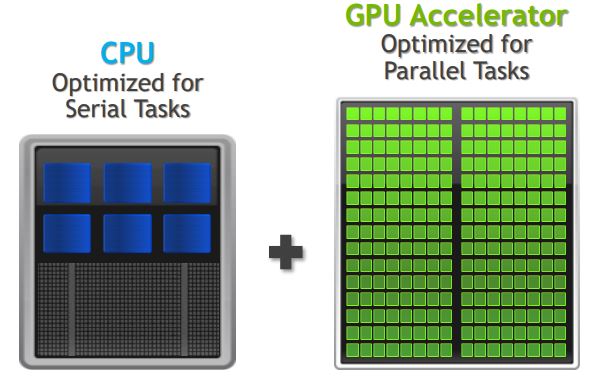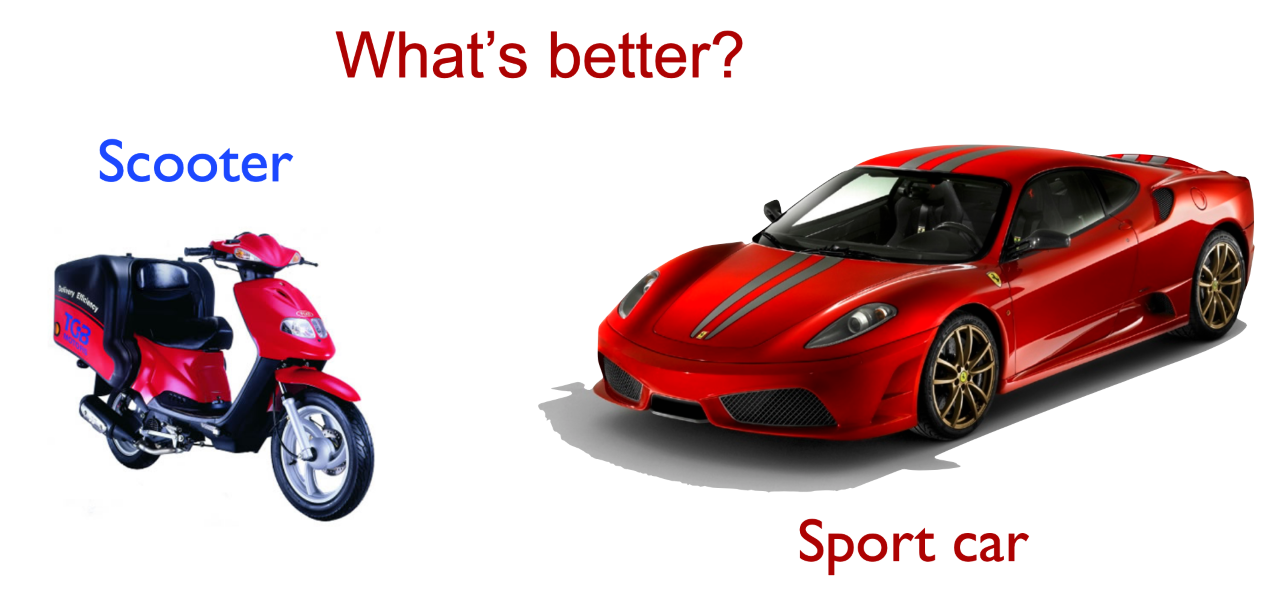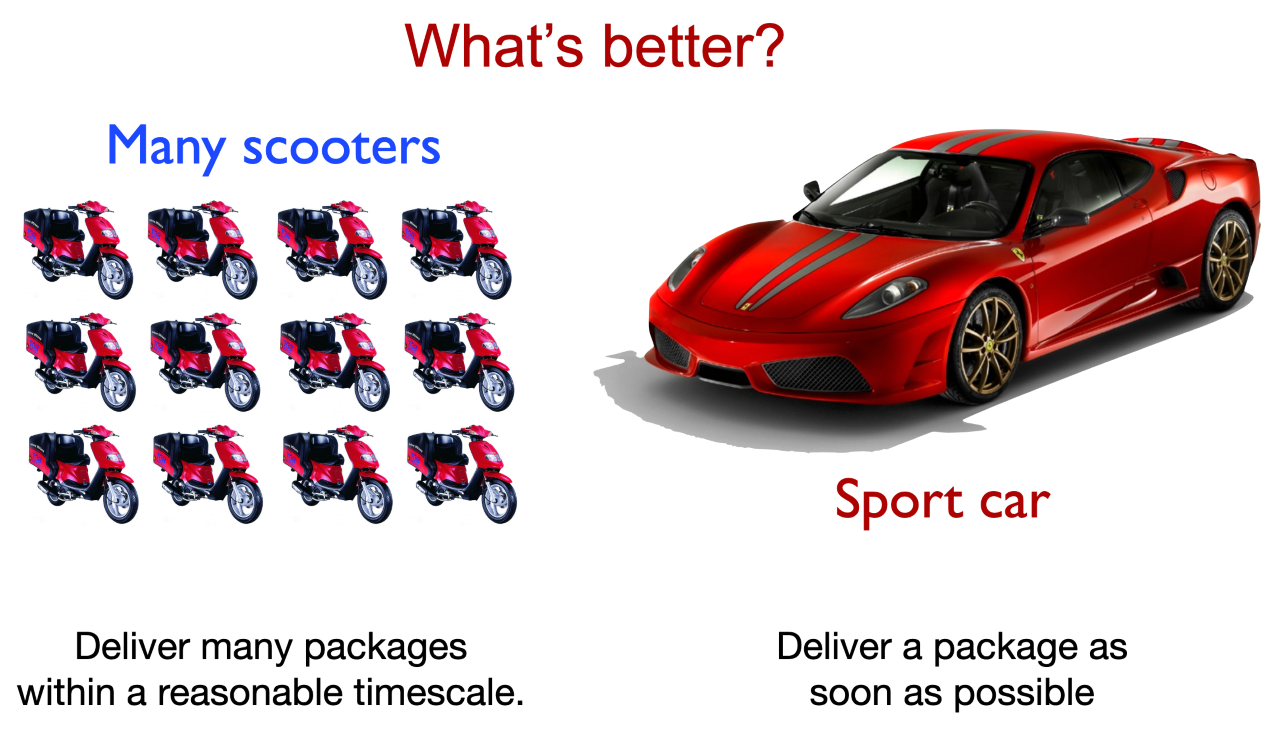CPU vs. GPU

- The CPU (Central Processing Unit) is the general-purpose processor responsible for handling most computing tasks in a system.
- The GPU (Graphics Processing Unit) is now widely used for accelerating scientific and high-performance computing tasks.
- GPU computing uses the GPU as a co-processor to accelerate CPU tasks by offloading compute-intensive, time-consuming portions of code onto the GPU.
| CPU | GPU |
|---|---|
| 4–8 cores (on laptop/workstation PC) | 100s–1000s of cores |
| Up to 48 cores (on Rivanna) | High throughput |
| Low latency | Good for parallel processing |
| Good for serial processing | Breaks jobs into separate tasks to process simultaneously |
| Quickly process interactive tasks | Requires additional software to convert CPU functions to GPU functions for parallel execution |
| Traditionally sequential execution | Typically parallel execution |
Metaphor: GPU vs CPU


CPUs are like scooters: simple, efficient, and great for quickly handling one task or a few tasks at a time.
GPUs are like sports cars: powerful, fast, and ideal for processing many tasks in parallel.
When you have many packages to deliver, a fleet of scooters (parallel delivery) can outperform one fast car — just like GPUs excel at parallel processing.
When you need to deliver one package as fast as possible, a sports car is the better choice — similar to how CPUs can be better for low-latency or interactive tasks.
The best option depends on your use case!
AlphaFold is designed for GPU computing, making it an ideal workload for systems like Rivanna that support GPU acceleration.